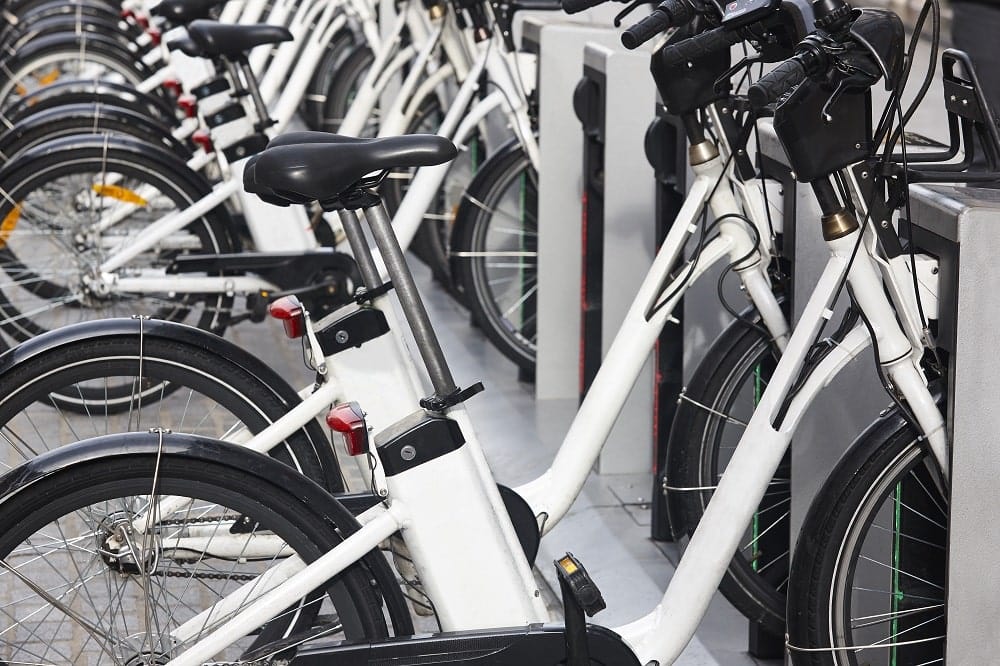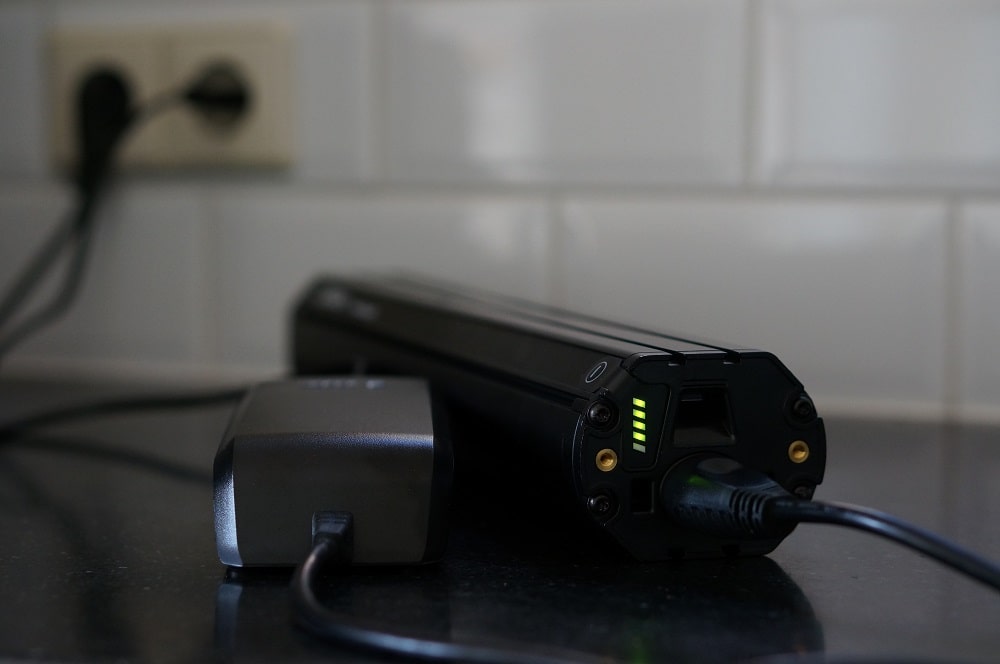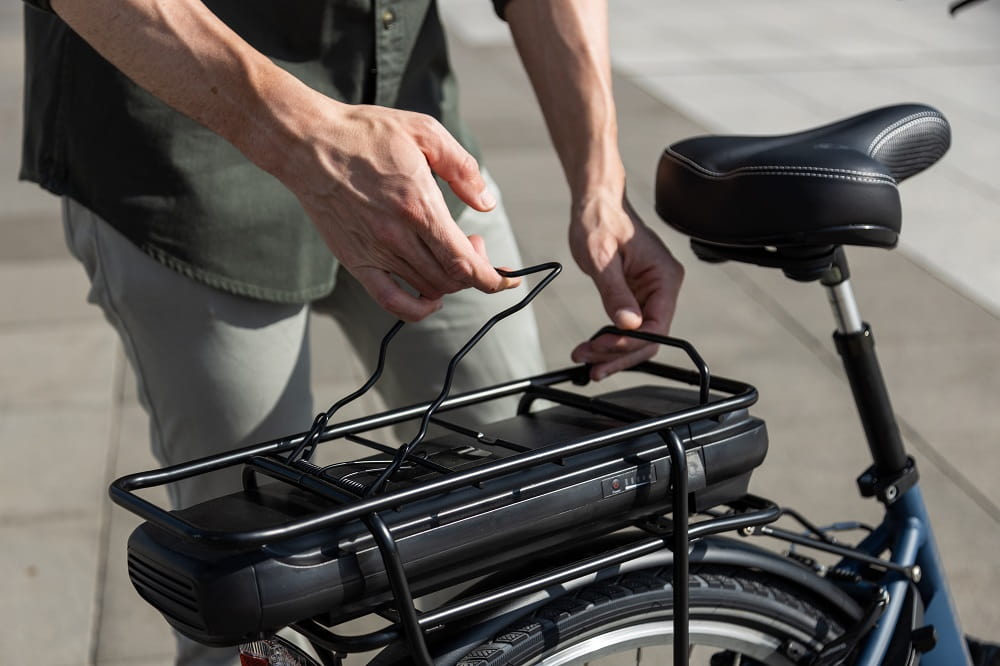
Finding the Right E-Bike Battery
E-bikes are a fantastic way to ride around town or explore nature in an environmentally friendly and effortless way. But how do you find the correct replacement battery for your e-bike when your old one breaks or starts to weaken? Is it easy to replace it? And what do you have to look out for? In this article we will help you to establish which battery is the right choice for your bike.
Which battery fits my e-bike?
There are different types of e-bikes, including city bikes, mountain bikes, trekking bikes and many more battery bikes. Each type of bike has different battery requirements depending on its use and desired performance characteristics. So make sure you know exactly which type of e-bike you have and do a bike battery check before you buy a new battery. In addition, the compatibility between your e-bike and the battery is crucial. Most dealers offer specific e-bike batteries for their models. However, there are actually only a small number of different battery types. With a replacement battery, you save money without compromising on performance or quality. We at Electropapa would like to shed some light on how to find the most suitable battery for your e-bike.

If you need a new e-bike battery but still have the old battery, you should check its specifications. This includes power (in watt hours or Ah), voltage (in volts) and the type of cells (e.g. lithium-ion). This information is crucial for finding the right replacement battery. Depending on your needs and budget, you can either choose a replacement battery with the same capacity or consider an upgrade. A higher capacity means your e-bike can achieve a longer range with battery assistance.
The positioning of the battery pack on an e-bike is also crucial, as it can have various effects on handling, stability and rider comfort.
- Integrated into the frame: This integration allows for better weight distribution, which improves the stability and handling of the e-bike.
- On the down tube: This is a popular position as the centre of gravity of the bike remains low and stability is increased.
- On the luggage rack: This is a practical position as the battery is easily accessible and has no influence on the frame geometry.
- In the seat tube: This positioning offers a clean look and keeps the centre of gravity of the bike low.
In addition, the quality of an electric bike battery is of great importance, as inferior batteries can lead to performance issues. So make sure to invest in a high-quality battery from a reputable manufacturer such as Electropapa to ensure reliable performance and a longer lifespan.
What battery power should an e-bike have?

The power an e-bike battery should have depends on several factors, including the rider's individual needs and preferences, as well as the type of riding planned. Here are some important considerations on e-bike power:
- Purpose: The required e-bike power varies depending on the purpose of use. Commuters who cover longer distances every day need a higher capacity than recreational cyclists who go on shorter trips.
- E-bike type: Different types of e-bikes (e.g. city bikes, mountain bikes, pedelecs) have different battery capacity requirements.
- Terrain: Hilly terrain requires more energy to cope with inclines. So if you live in a mountainous region, you should consider a larger battery capacity.
- Rider weight: The weight of the rider and any luggage carried will affect the amount of energy required. Heavy riders or a lot of luggage thus require a higher battery power.
- Riding style: An energy-efficient riding style in which the rider actively assists can increase the range and reduce the required battery power. E-bikes often offer different riding modes with different power levels. The higher the power level, the faster the battery is consumed.
- Your own fitness level: Your own physical fitness and willingness to pedal can influence the battery requirements. For example, a more powerful bicycle battery will offer you more support if you want to exert less effort.
How many Wh should an e-bike battery have?

Before we get into the details, let's take a quick look at what watt-hours (Wh) are. Watt-hours are a unit of measurement for the amount of energy that an electric bike battery can store. So if you have an e-bike with a 500 Wh battery, it means that the battery can deliver 500 Watts of energy per hour. The higher the watt-hour rating, the more energy the bike battery can store, and the longer the distance you can ride before the battery needs to be recharged.
There are several types of electric bike batteries, including lithium-ion batteries, which are most commonly used in modern e-bikes. These E bike batteries offer a high energy density, a long service-life and are comparatively light. Battery power is measured in watt-hours (Wh), with larger numbers indicating higher capacity.
Generally, a typical e-bike battery has a capacity of 250 to 750 watt-hours (Wh). A 250 Wh battery may be sufficient for short rides on flat terrain, while a 500 Wh or 750 Wh battery is recommended for longer rides or more challenging terrain.
How far can you go on a 500 Wh battery?
250 to 500 Wh is the typical battery capacity for city bikes and e-bikes for everyday use. They usually offer an e-bike battery range of 40 to 100 kilometres.
250 to 500 Wh is the typical battery power for city bikes and e-bikes for everyday use.
Batteries with 500 to 750 Wh, on the other hand, are well suited for longer tours and hilly terrain. They offer an e-bike range of 80 to 150 kilometres.
Batteries with 500 to 750 Wh are good for longer tours and hilly terrain.
How far can you get on a 1000 Wh battery?
Batteries with a capacity of over 750 Wh to 1000 Wh can be used in high-end e-bikes and e-mountain bikes and usually allow a range of more than 150 kilometres.
Conclusion
Choosing the right bike battery requires some research and consideration, but it is crucial to the performance and subsequently the enjoyment of your electric bike. So make sure you know the specifications of your current battery, check compatibility and keep an eye on quality. These include:
- Battery type: E-bike batteries come in different types, including lithium-ion and lithium-polymer. It is crucial to choose a battery that matches the original battery in your e-bike.
- Voltage (volts): The voltage is a decisive factor for compatibility. It must match the voltage of your original battery.
- Capacity (Ah): Make sure that the capacity of the replacement battery meets your requirements and is comparable to the capacity of the original battery.
- Shape and size: Replacement batteries must fit into the battery compartment of your e-bike. This means you need to carefully measure the available space and compare it with the dimensions of the replacement battery.
- Plugs and connectors: The plugs and connectors of the replacement battery must be compatible with those of your e-bike.
- Charge and discharge power: Make sure that the charge and discharge power of the replacement battery is compatible with the specifications of your e-bike system.
Because only with the right bicycle battery can you ensure that your e-bike is always ready for use and offers you reliable performance.
E-bike batteries by Electropapa
If you are looking for high-quality e-bike batteries, you should visit Electropapa, our online shop. Here you will find a wide range of bike batteries to suit your needs. We offer a varied selection of models and capacities and are happy to answer any questions you may have. So why not visit our shop today and explore our diverse collection of Electropapa E Bike Batteries.



